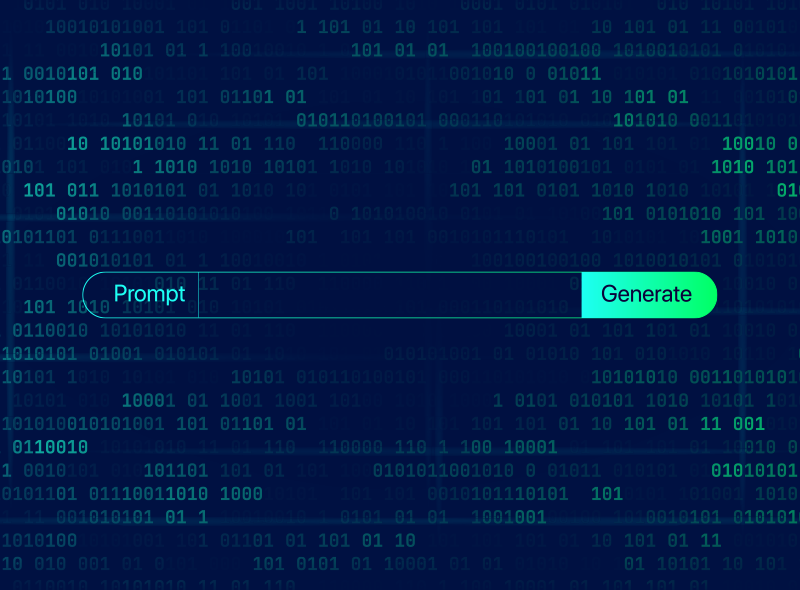AI Contract Readers: The New Essential Tool for Modern Legal Teams

- March 28, 2025
- 15 min read
- Sirion
From vendor agreements and employment terms to multi-million dollar mergers, contracts govern how companies operate, collaborate, and grow. But let’s face it: reading and analyzing contracts is time-consuming, repetitive, and often error-prone. That’s where AI contract readers are stepping in to change the game.
Why Traditional Contract Review Is Broken
Before we get into the “AI” of it all, let’s understand the problem it’s solving. Contract review today is largely manual. Legal teams or external counsel comb through pages of dense legalese, flag clauses, compare terms, and try not to miss anything critical.
The problems?
- Time drain: Reviewing just one complex contract can take hours. Multiply that by dozens or hundreds, and you’re burning valuable legal bandwidth.
- Inconsistency: Different lawyers interpret clauses differently. Human error is a constant risk.
- Cost: Manual review, especially when outsourced, racks up fees quickly.
- Speed vs. thoroughness trade-off: Deadlines often force teams to choose between being fast or being comprehensive.
How AI is Applied in Contract Review
AI changes the review process from a manual, line-by-line slog into a faster, more precise, and consistent workflow. Instead of lawyers spending hours combing through contracts, AI-powered tools do the heavy lifting by automating the first level of analysis—surfacing what matters most so legal teams can focus on judgment and strategy.
Here’s how it works in practice:
- Natural Language Processing (NLP): AI models are trained on vast libraries of contracts to recognize and interpret legal language, clause structures, and obligations with high accuracy.
- Automated Clause Detection: The system can instantly identify standard and non-standard clauses—like indemnity, confidentiality, or liability caps—without human input.
- Risk Scoring and Alerts: Based on a company’s playbooks and policies, AI flags risky deviations and unusual terms, ensuring nothing slips through the cracks.
- Benchmarking and Comparison: AI tools compare contract terms against templates, historical agreements, or market standards, showing how aligned (or misaligned) the language is.
- Data Extraction and Structuring: Key details such as dates, parties, payment schedules, and renewal terms are automatically pulled into structured formats for easier analysis and reporting.
- Redline Assistance: Advanced AI suggests edits or alternative wording, giving reviewers a head start in negotiations and saving time on routine markups.
By applying AI in these ways, organizations move past the speed-versus-thoroughness trade-off. Instead, they get both—fast, scalable review and a sharper focus on what really matters in each contract.
So what does this technology actually look like in action? That’s where AI contract readers come in.
What Exactly Is an AI Contract Reader?
At its core, an AI contract reader is software that uses machine learning and natural language processing (NLP) to automatically analyze contracts. It reads legal documents much like a human would—but faster, more consistently, and at scale.
These tools are trained on thousands (or millions) of contracts to understand legal language, spot risks, identify standard or non-standard clauses, and even suggest revisions.
AI contract readers don’t replace lawyers; they make lawyers faster and more effective.
What Can AI Contract Readers Actually Do?
They do more than just “read” legal documents. Here’s what modern AI contract readers bring to the table:
- Clause identification and classification: They can instantly find and categorize clauses like indemnity, termination, force majeure, and governing law.
- Risk flagging: Based on your internal playbook, AI tools can flag unusual or high-risk terms.
- Term comparison: They can benchmark contract terms against templates, previous agreements, or preferred standards.
- Extraction of key data points: Names, dates, payment terms, obligations—all automatically pulled and organized.
- Redlining and suggestions: Advanced platforms can propose edits or highlight language that deviates from preferred wording.
All of this means less time scanning pages, and more time focusing on strategy and judgment.
Of course, not all AI contract readers are built the same. The difference between a tool that simply automates reading and one that transforms your review process comes down to specific capabilities.
Key Features to Look for in an AI Contract Reader
When evaluating AI contract readers, focus on capabilities that go beyond surface-level automation:
- Custom Playbook Integration – Aligns contract reviews with your organization’s preferred language, clause standards, and negotiation guidelines.
- Context-Aware Analysis – Reads clauses in relation to the entire contract, understanding dependencies and intent—not just keywords.
- Multi-Language and Jurisdiction Support – Handles contracts in multiple languages and legal systems, crucial for global enterprises.
- Version Comparison and Change Tracking – Highlights nuanced changes between drafts, ensuring nothing slips past in revisions.
- Business-Friendly Interface – Designed so both legal and non-legal teams can extract value without a steep learning curve.
Who’s Using AI Contract Readers?
It’s not just tech companies and startups. AI contract readers are now used across sectors:
- In-house legal teams trying to stay lean while managing growing volumes of contracts.
- Law firms looking to improve margins and turnaround times.
- Procurement and sales departments that need to quickly check terms before pushing deals through.
- Compliance teams ensuring that contracts meet internal and external regulations.
In short, anywhere contracts are being read, AI is starting to lend a hand.
While any organization that handles contracts can benefit, certain industries see immediate, high-impact returns from AI-powered review.
Industry-Specific Use Cases
Different sectors face different contractual challenges—and AI adapts to each.
- Financial Services – Detects regulatory clauses, anti-money laundering provisions, and ensures adherence to lending requirements.
- Healthcare – Identifies HIPAA, BAA, and data privacy obligations to maintain compliance in patient data handling.
- Manufacturing & Supply Chain – Flags supplier liability, delivery timelines, and quality standards across vendor agreements.
- Technology & SaaS – Protects intellectual property, ensures data security compliance, and monitors SLA commitments.
Before diving into the benefits, it’s worth clarifying how AI contract readers differ from other tools often mistaken for them.
AI Contract Readers vs. Other Legal Tech Tools
| Tool Type | Primary Function | Limitation vs. AI Contract Readers |
| Document Management Systems (DMS) | Stores and organizes contracts | Doesn’t analyze or interpret clauses |
| Basic Contract Analytics | Tracks high-level contract metrics | Limited ability to read and contextualize clauses |
| Manual Review Outsourcing | Uses external legal resources | Slower, costlier, and prone to human interpretation variance |
AI contract readers combine the accessibility of a repository, the analytics of reporting tools, and the clause-level precision of an experienced lawyer—without the bottlenecks.
The Real Benefits of AI Contract Readers
The hype around AI in legal tech is real, but let’s cut through it. Here’s what matters:
1. Speed Without Sacrificing Quality
AI contract readers can analyze contracts in minutes, not hours. That means faster deal cycles, quicker onboarding, and more responsive legal teams.
2. Improved Accuracy and Consistency
AI doesn’t get tired. It doesn’t gloss over a clause at 2 AM. That means fewer missed red flags and more standardized reviews.
3. Scalability
Have 200 contracts to review in a week? AI doesn’t blink. Human teams would need reinforcements. AI scales effortlessly.
4. Cost Savings
Faster reviews mean lower external counsel fees and reduced internal workloads. The ROI on automation can be significant.
5. Actionable Insights
Over time, AI tools can surface trends: Which clauses get negotiated most? Which vendors push risky terms? That intelligence can inform better contract strategy.
Common Concerns Legal Team Have with AI Contract Readers
Understandably, legal teams have concerns. But most of these are getting addressed as the tech matures.
- “Can we trust AI with legal documents?” Yes, especially when combined with human oversight. Think of AI as a junior associate who never sleeps.
- “Is our data secure?” Leading platforms offer robust encryption, data residency controls, and enterprise-grade compliance.
- “Will this replace lawyers?” No. It replaces the grunt work, not the judgment.
Where AI Still Has Limits
AI contract readers are powerful, but they’re not infallible.
- They may misinterpret highly customized clauses that don’t resemble anything in their training data.
- They don’t understand context the way a human does. For instance, they might flag a clause as risky when it’s actually low risk given the business relationship.
- They can’t make decisions. They surface information, but you still need lawyers to act on it.
That said, these tools are improving rapidly, especially as they get tailored to specific industries and company playbooks.
How Contract Lifecycle Management (CLM) Platforms Elevate AI Contract Readers
AI contract readers are most powerful when integrated into a broader contract management workflow. That’s where Contract Lifecycle Management (CLM) software comes in.
CLM platforms manage a contract from initiation to execution to renewal. When AI contract reading capabilities are built into a CLM, magic happens:
- Faster approvals: AI can pre-screen contracts before they reach legal, allowing low-risk deals to move faster.
- Smart repositories: Contracts get automatically tagged, indexed, and made searchable for future use.
- Seamless collaboration: Legal, sales, procurement, and finance can all access the same contract insights in one place.
- Audit readiness: AI makes compliance reviews and audits far less painful by surfacing key terms and deviations instantly.
Integration with Enterprise Systems
When embedded into your enterprise ecosystem, AI contract readers, amplify efficiency across departments:
- CRM (e.g., Salesforce) – Pre-checks contract terms during deal cycles, enabling sales to close faster with fewer legal delays.
- ERP Platforms – Monitors supplier terms, payment conditions, and renewal triggers for procurement and finance.
- eSignature Tools – Ensures all clauses are reviewed before execution, reducing last-minute surprises.
Sirion connects seamlessly with enterprise systems like Salesforce, SAP and Oracle—ensuring that contract insights flow automatically between legal, sales, procurement, and finance without duplicate data entry or missed updates.
Why Sirion Leads the Pack in AI-Powered Contract Reading
When it comes to contract intelligence, Sirion sets the benchmark. It doesn’t just read contracts—it understands them. With powerful AI modules like the IssueDetection Agent and Redline Agent, Sirion goes beyond basic automation.
- Spot issues instantly: Sirion’s IssueDetection Agent highlights deviations from your playbook in real time, surfacing contextual issues and categorizing them for streamlined review. It helps legal teams uncover risks effortlessly, understand the risk profile of a contract, and monitor changes across document versions.
- Negotiate smarter: By analyzing negotiation trends and flagging legacy positions, Sirion gives you insight into how your contract terms are evolving—empowering you to take a more strategic stance.
- Redline with precision: Sirion’s Redline Agent acts on identified issues with surgical precision, editing only the parts of a clause that truly need revision. You get clear, plain-language explanations for each redline, keeping you in control of every change.
- Balance legal and business needs: From service levels to rate cards to tables, Sirion doesn’t just handle the legal boilerplate. It understands the commercial aspects too, making it a complete solution for today’s contract workflows.
Sirion doesn’t just assist with contract review. It redefines it.
To secure long-term adoption, legal leaders need more than anecdotes—they need data. Here’s how to measure the true ROI of an AI contract reader.
ROI and KPI Measurement Framework
Quantifying the impact of AI contract readers can be straightforward when you track the right metrics:
- Review Time Reduction – Measure average hours saved per contract.
- High-Risk Clause Detection – Track the number and severity of issues flagged.
- Reduced External Counsel Spend – Compare outsourcing costs before and after adoption.
- Speed-to-Signature – Monitor how quickly contracts move from draft to execution.
We’re still in the early chapters of AI in legal work—and the next phase will go even further.
The Future of AI in Contract Review
The capabilities of AI contract readers are expanding rapidly:
- Predictive Risk Scoring – Assigns a risk level to contracts before human review begins.
- Industry-Tailored Models – Pre-trained AI for niche sectors, improving accuracy on specialized terms.
- Generative Drafting Assistance – Creates first drafts of clauses or entire agreements based on preferred language.
As these capabilities mature, AI will not just review contracts—it will actively shape better ones from the start.
The Legal Assistant You Didn’t Know You Needed
AI contract readers aren’t science fiction anymore. They’re not just “nice to have.” They’re becoming essential for legal teams and businesses that want to move faster, reduce risk, and get smarter about how they handle contracts.
They won’t replace lawyers—but they will change how lawyers work. The same way spreadsheets changed accounting and search engines changed research, AI is transforming contract review.
The future of smarter legal work isn’t just about doing things faster. It’s about doing them better. And AI contract readers, especially when part of a robust CLM platform like Sirion, are leading that charge.
Frequently Asked Questions (FAQs)
How long does it take to implement an AI contract reader in a legal team?
Implementation timelines vary depending on the complexity of your contracts, the size of your document repository, and integration needs. Some teams can start using a basic AI contract reader in a matter of days, while full enterprise rollouts with custom playbooks and system integrations may take a few weeks.
Can AI contract readers be trained on our organization’s historical contracts?
Yes. Most enterprise-grade AI contract readers allow you to train or fine-tune the system using your existing contracts. This ensures the tool understands your organization’s preferred language, risk thresholds, and negotiation patterns.
Do AI contract readers require constant internet connectivity to function?
Not always. Many platforms offer both cloud-based and on-premise options. On-premise or private cloud deployments can process contracts locally, which is often preferred by organizations with strict data residency or security requirements.
How do AI contract readers handle non-standard or heavily negotiated clauses?
Advanced AI contract readers flag non-standard language for human review, even if it falls outside the tool’s trained dataset. Some also allow you to add these clauses to a “known” library over time, improving accuracy for future reviews.
Can AI contract readers assist in post-signature contract management?
Yes. Beyond review, AI contract readers can extract key obligations, renewal dates, and performance metrics from executed contracts, making it easier to track compliance and operational commitments.


